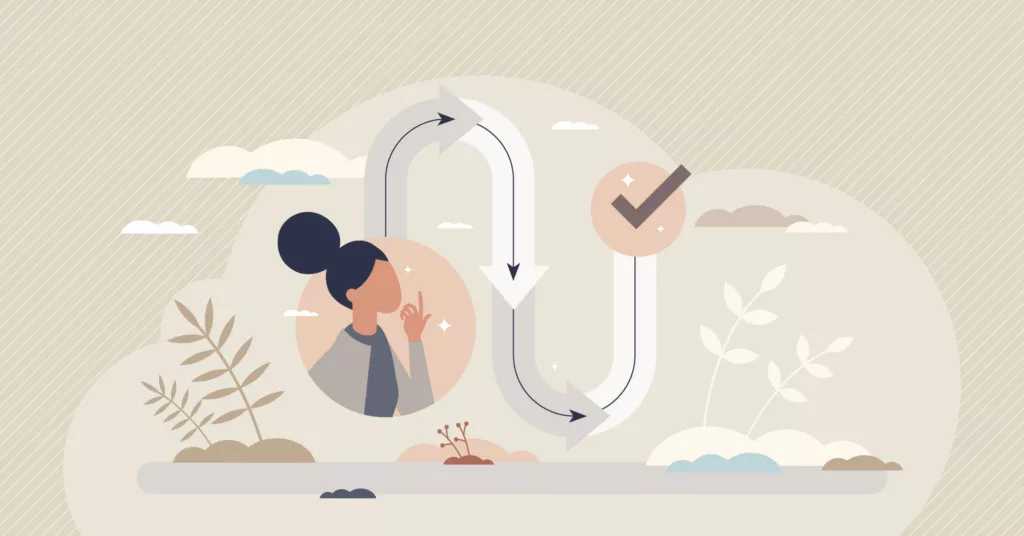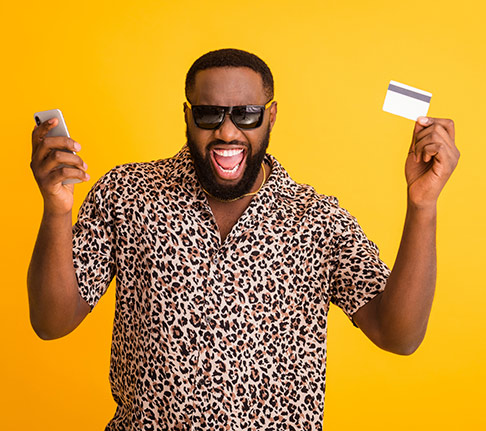Does this sound like you? Your website’s blog receives a lot of traffic, especially organic traffic from search engines. However, those users either leave immediately, before or after reading the blog post, or don’t convert at the same rate as other channel users. In this article, we will explore the different stages of the buyer’s journey/marketing funnel, and, more importantly, teach you about content creation that caters to each stage, so you can convert viewers into readers, and readers into customers.
Blog content is a huge part of a successful SEO strategy ONLY when it does three things:
- Attracts search engine traffic
- Builds your website’s EAT (Expertise, Authority, Trust)
- Convinces readers of the value of your product or service
A content creation strategy that doesn’t hit these three points and move the reader to the next stage of the buyer’s journey will not give you adequate return for the time invested.
Why does regular content creation matter?
One of the biggest opportunities you have to reach new customers is through information sharing via your blog. Posting on a regular basis is the best and only approach. You might have written an excellent post, but if the reader follows the links to previous posts, what will they find? Showing that you have the answers to multiple questions establishes both trust and authority.
If you consistently provide information that is valuable to your target audience, you will pop up more often in answer to their queries (improved search ranking), and they will stay longer, once they find the answer to their question. Put simply, the more consistent you are with your content, the more traffic (and ultimately customers) you will capture, who are looking for your products or services.
What is the Buyer’s Journey?
The buyer’s journey, or marketing funnel, outlines a customer’s journey with you from the initial stages of discovering your business to becoming a loyal customer. Over the years, the funnel has changed and grown to include more stages, but here we’ll focus on the main pre-customer stages: awareness, consideration, conversion.
Awareness stage: Aware of a problem as well as possible solutions.
Consideration stage: Considering your company as a possible solution to their problem.
Conversion stage: Want to purchase your solution to their problem.

Always consider the buyer’s journey/marketing funnel when curating content
Equally important as delivering a succinct, helpful message, is delivering the right message to the right audience. When you’re writing a blog post to boost your search engine optimization, you begin with researching the keywords people use to find the topic and investigate what questions those people are asking. This will establish their intent, and thus their stage of the buyer’s journey and help curate your content creation strategy.
For instance, if you are a dry cleaners and want to promote your green process, questions that get interested parties to your blog might be:
- What makes a dry cleaner green? (Awareness)
- Is dry cleaning fluid safe for the environment? (Awareness)
- Do I need to worry about the chemicals in dry cleaning? (Consideration)
- Green dry cleaner (Conversion)
- Green dry cleaners near me (Conversion)
The progression of sales efforts through a buyer’s journey, from the initial contact to closing the sale, predates the Internet by a mile. Traveling salespeople don’t go for the hard sell on a cold call. They establish leads and nurture them until they’re receptive to the sales pitch.
Likewise, if you write about the best [insert your brand] widget to buy, before your reader is sure they need a widget at all, you’ll be about as effective as a barker at the fair; just noise to be tuned out.
How to write blog posts for each stage of the buyer’s journey
Now that you have established the stage of the marketing funnel that you are targeting with your post, the WHO, let’s learn HOW to create content for each of these stages of the marketing funnel.
Awareness Stage
In the awareness stage, your prospect is aware that they have a problem and that possible solutions exist. So, perhaps they picked up their smartphone and did a quick search to confirm this assumption. They are looking for more information about the problem and exploring ways it can be solved. They’re in research mode. You’ll want to clearly state the problem and what they will find by continuing to read your article.
And what should they find? Including the following elements help to inform the reader, who is in the awareness stage:
- Research Data: Statistics, infographics, and current trends
- Resources: Checklists, guides, tips, and how-to videos
The call to action at the end of this type of post will be an offer to answer their questions or provide more information. You are continuing your offer to be a resource, not yet asking them to buy.
Consideration Stage
Shoppers in the consideration stage have established that they need to solve the problem. They’re now doing their research to understand the difference between various solutions. They’re focused on comparison shopping, which may include forays into review and consumer protection sites. Now you can establish that you are a trusted brand, so they won’t bother to search reviews, or only do it to confirm what they’ve just read on your blog.
To keep their attention on your brand, you can use any of the following elements for capturing buyer’s at the consideration stage:
- Product comparisons
- Case studies and portfolio highlights
- Company awards, accreditations and accolades
- Video demos and tutorials about your solution
- Testimonials
The call to action at the end of the consideration post might be an offer to learn more about how your solution might apply to their specific problem, or to provide a quote. You’re not yet insisting that they buy from you, but suggesting that it’s time to talk about it.
Conversion Stage
Folks in the conversion stage are ready to purchase your solution. Tell them more about the various options or models you offer, maybe that you have a money-back guarantee, or, depending on the type and price of the item, that you have excellent customer support. Now you’re reeling them in.
Include things like:
- A decision tree, graph or other means of helping them choose the right model or features
- Illustration of the ease of purchase
- Statement of commitment to customer care
The call to action for a conversion stage post is to purchase your product.
To summarize, proper research into the audience you are targeting will inform your content creation strategy you will need to move your readers on to the next stage of the buyer’s journey. Through proper SEO content, you will:
- Attract search engine traffic
- Build your website’s EAT (Expertise, Authority, Trust)
- Convince readers to choose your product or service over the competition
Keep this guide bookmarked as a handy resource for content creation, and check back often for more tips, tricks and insights from the SEO experts at West County Net.
The Benefits of Collaboration
To ensure you are using tested marketing science and evolving strategies for content, you may also consider partnering with a digital marketing agency. The experience and expertise of SEO content experts can help you turn more readers into buyers. When choosing a marketing agency, your results will be better still if you choose one that will work alongside you with an intense curiosity and commitment to your brand.
At West County Net, we offer specially tailored, comprehensive digital marketing solutions, all performed in-house. Contact us today if you would like to learn more about our services and how they might help your business.



